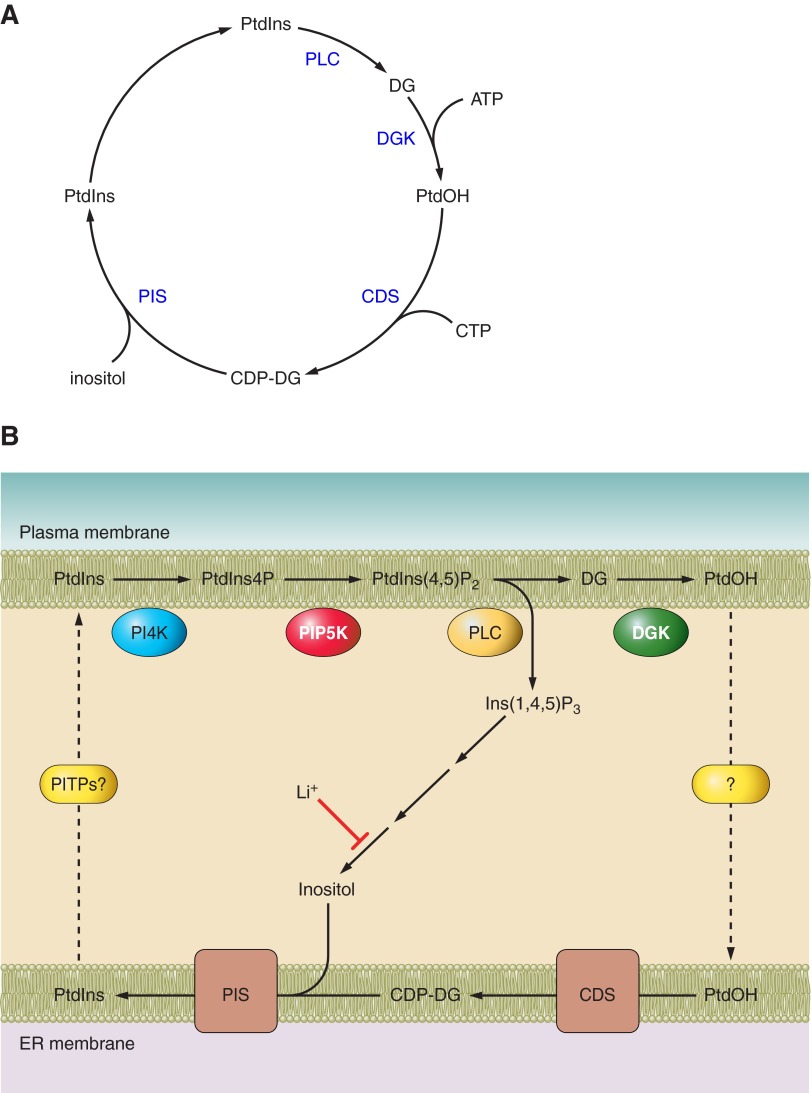Figure 2.
The phosphoinositide cycle as originally perceived (A) and the updated version also showing the polyphosphoinositides, PtdIns4P and PtdIns(4,5)P2 (B). The primary event in triggering the cycle is the agonist-induced PLC activation. Note that all of the products of PtdIns(4,5)P2 hydrolysis are recycled. Diacylglycerol (DG) is converted to phosphatidic acid (PtdOH) by one of many DG-kinase enzymes (DGK). PtdOH then has to be transferred from the PM to the endoplasmic reticulum by a mechanism that has not been identified. In the ER, one of two CDP-DG synthase (CDS) enzymes conjugates PtdOH with CTP, and the CDP-DG is then conjugated with myo-inositol to phosphatdylinositol (PtdIns). PtdIns synthesis takes place mainly in a highly dynamic subcompartment of the ER. Much of the inositol used for PtdIns synthesis is derived from the sequential dephosphorylation of inositol 1,4,5-trisphosphate [Ins(1,4,5)P3], the other product of PLC-mediated PtdIns(4,5)P2 hydrolysis. Several of the dephosphorylation steps are inhibited by Li+, including the final dephosphorylation of inositol monophosphates by the enzyme inositol monophosphatase (IMP). The newly synthesized PtdIns has to reach the PM by a still obscure mechanism, perhaps mediated by PtdIns/PtdCho transfer proteins (PITPs).

